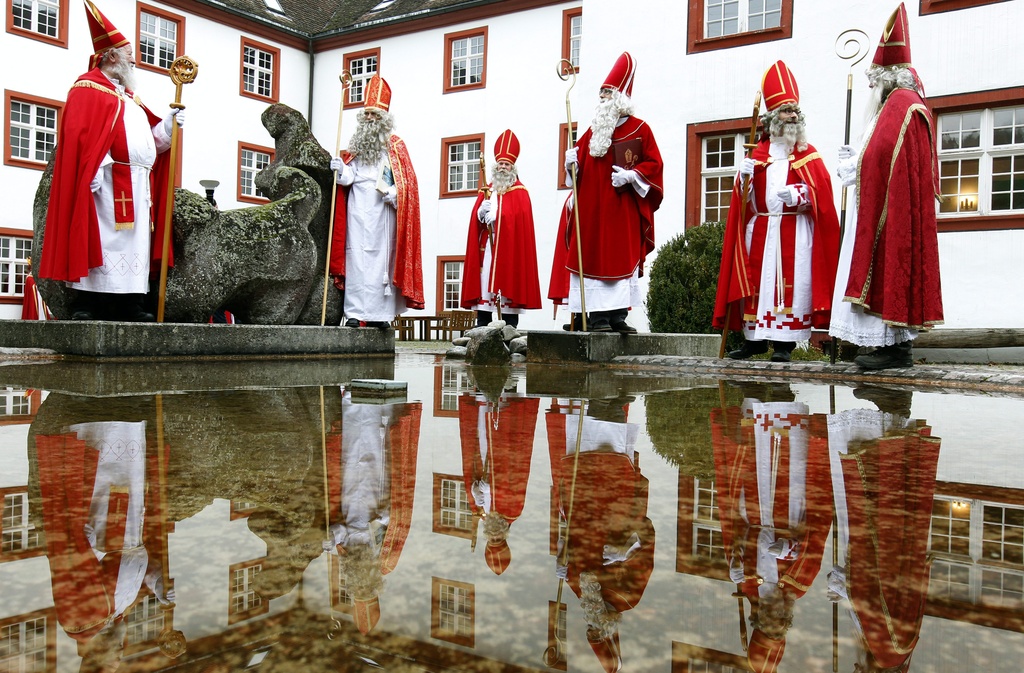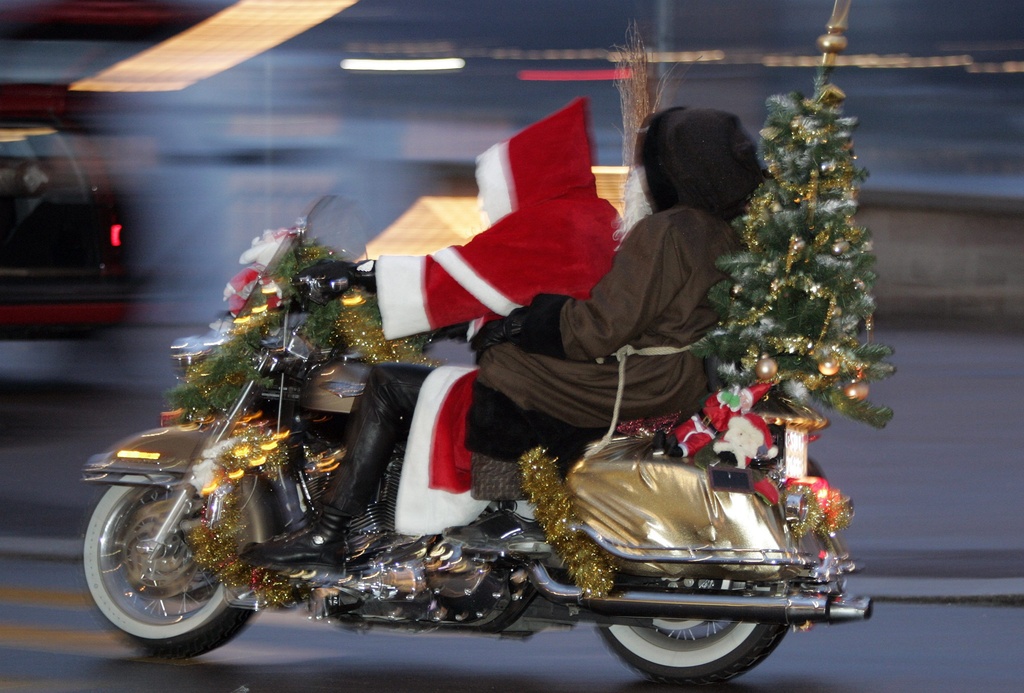Keeping up the St Nicholas tradition

With Christmas becoming increasingly commercialised, the custom of St Nicholas, which is celebrated on December 6 in Switzerland, has been fighting back.
St Nicholas, who is known as Samichlaus in Swiss German, dispenses gifts of chocolate, nuts and fruit – as well as sage advice – to children.
This differs from the more Anglo-Saxon tradition of Father Christmas, the ubiquitous jolly old man who delivers presents and fills stockings that are opened on Christmas Day.
But the difference between the two is not always clear nowadays, especially in cities, which is why, on November 12, the Roman-Catholic church in canton Aargau decided to host the first ever “Samichlaus Synod” at Wislikofen.
Attending were the volunteers who each year don St Nicholas costumes to carry out visits to children either on December 6 or on the weekend closest to it.
“It was a way of honouring their work, especially in this European year of volunteering,” organiser Claudia Mennen told swissinfo.ch.
In fact, so popular was the synod that all of the 90 places were quickly snapped up, with a further 40 Samiclauses having to be turned away.
A bishop
The tradition goes back to the fourth century Nicholas of Myrna, a bishop in what is now Turkey, who is the patron saint of children. That is why Samichlaus is often dressed as a bishop, complete with mitre and staff, and doesn’t always wear red. He does, however, have a white beard.
Santa Claus, wearing his red and white cape, is more of a marketing instrument from the United States – even if his origins go back to St Nicholas, says Mennen. However, caped St Nicholases are to be found in some regions of Switzerland, such as Zurich.
Santa has now become interchangeable with his British form, Father Christmas.
“In the countryside people know the difference between St Nicholas and Father Christmas,” Mennen explained.
“Mostly families are not under so much stress as in the cities and in urban areas you also find different types of families such as single-parent and patchwork families.”
“Here the Samichlaus tradition is not so much alive and we have to get the message across.”
Challenges
This tallies with the experience of Marcel Campana, a Samichlaus of 16 years standing, from the Catholic city parish of St Urban in Winterthur, who attended the synod. He says that some foreign families have simply not heard of Samichlaus.
“You see it in Italian families where the tradition is totally different to ours,” he told swissinfo.ch.
“Last year I was at a family where the mother came from Vietnam and the smaller of the four children didn’t really know about St Nicholas, but the older ones did from friends and school.”
Campana saw the synod as a good place to share experiences with others.
He attended a workshop on how to carry out a visit in a Kindergarten. Other sessions gave advice on how to deal with difficult children or how to tell the traditional St Nicholas story.
This is an integral part of any visit. “Children learn a poem about the St Nicholas tradition or play a song on an instrument and the St Nicholas then reads a story on the problems children might cause their parents, such as not helping out because they want to play outside,” said Rolf Wüst. He is the organiser of the Samichlaus group in the village of Wohlen, canton Aargau, which is celebrating its 70th jubilee this year.
Praise and trust
But there is no longer the threat of children being punished by St Nicholas’ forbidding-looking cane-wielding helper – known as Schmutzli in the German-speaking part of Switzerland – who has undergone an image softening of late.
“A good St Nicholas praises the children and seeks out the good things rather than the bad,” Wüst, who was also at the synod, told swissinfo.ch. But he should be able to gain enough trust to point out where the child could improve their behaviour, he said.
Although many synod participants were from German-speaking Switzerland, St Nicholas is also celebrated in the French-speaking part, particularly in the Catholic cantons. In bilingual Fribourg, whose patron saint is St Nicholas, there is a special procession. This year’s event on December 3 attracted up to 30,000 people.
So despite the challenges, the tradition survives: Campana’s children, now grown up, have acted as Schmützlis, Wüst’s organisation carries out up to 220 visits a year.
“In these technology times, where people have hardly any time, St Nicholas acts as a herald of Christmas,” Wüst said.
“It’s very important that a milestone is laid and that this tradition is kept alive.”
St Nicholas: 4th century bishop in Myrna, now Turkey. Helped the poor. Saint’s day: December 6. Leaves children nuts, fruit and chocolate.
Father Christmas: origins in Christian and European tradition but modern image of jolly man in red and white comes from Victorian era-United States. Visits homes at midnight on Christmas Eve, coming down the chimney to leave presents and fill children’s stockings. Has a sleigh pulled by reindeer and elves. People leave out mince pies and brandy for him.
Santa Claus: based on the Dutch Sinterklaas (St Nicholas) and coming from the US. Nowadays interchangeable with Father Christmas.
This is celebrated as a family occasion on the evening of December 24, with children normally being able to see the tree lit and decorated for the first time.
Traditionally, children in Catholic areas were told that their presents were brought by Christkind (German), Le petit Jésus (French), or Gesu Bambino. But these days children are also very familiar with Father Christmas.

In compliance with the JTI standards
More: SWI swissinfo.ch certified by the Journalism Trust Initiative















You can find an overview of ongoing debates with our journalists here . Please join us!
If you want to start a conversation about a topic raised in this article or want to report factual errors, email us at english@swissinfo.ch.